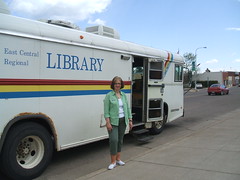Most job training programs give lots of attention to getting a job — finding the right job, writing a resume, getting and succeeding at interviews, and negotiating terms of employment. No skills are offered in leaving a job. Yet, as surely as most workers have multiple jobs through their careers, they will leave just as many. I think that the indicators of character and professionalism in how someone leaves a job are just as valid as the person’s actions when newly hired.
I’ve done a lot of thinking about this in the last year as I’ve changed jobs and several family members, friends, and professional colleagues have also left one job for another. I’ve had deep discussions with a number of people about leaving a job. The classiest exits I’ve seen are well-planned and executed. The leaving employees invest time and employ appropriate counsel in accepting a new job and planning their exit. They treat the losing employer with utmost regard in delivering a timely and respectful resignation notice. They treat the colleagues they are leaving and the time they spent working together with value and let them know it. (even when they don’t mean it)
On the other hand, I hate to see employees leave a business with a “stick it to ’em” philosophy. They wish their former employer no good will, and in truth hope they’ll fail. Why on earth would you want anywhere you worked to fail? I would hope that continued success for my former organization is due in some small part to residual effects of my contributions. Besides that, as I go on my merry way, part of my resume is my former employer, and I would want to continue to look good for having worked there. And as for my former colleagues, the good ones I’d like to hire or work with again. And as for the others, I don’t want them undermining my efforts.
The same goes for mutual decisions that an exit is best for the organization and the employee. Some relationships are just not a good fit. And even if it’s not a mutual wish, it’s going to happen. Get over it and take the high road. Make it look like it’s your idea. Keep the complements and thanks genuine and the complaints unspoken. Set the example and hopefully the employer will do the same.
Some employers have exit interviews. Someone asked me this year what they should say. I said, if I were them I’d say it was one of the best places I’d ever worked. They don’t really want to know the dirt, or the bad feelings you may harbor. You’re history from the day you hand over your resignation form or letter. Anything you say is only sour grapes. And remember, the hand that accepts your resignation and hears the exit interview gives your next and possibly several more recommendations. Remember the good things, and forget everything else as soon as possible.
No one can afford to burn bridges. If the next job doesn’t work out, and lots don’t, you’ll need your professional network to find the next next job, and the next next recommendation. And besides, who wants to hear all the negative baggage you’re carrying around. Reference the analogy of when you point an accusatory finger, there are 3 more pointing back at you. Bad-mouthing a past employer may raise questions about your ability to fit in. And most importantly, in almost all jobs, as a new employee you’re on probation for the first few months. Don’t suggest that you might have been the problem in the bad fit of your former job.
And what if you find out you’ve made a mistake? Well, reference paragraph 2 of this post about planning before the resignation letter is written. Once in another career I had an employee who wanted to rescind a resignation. After considerable deliberation at the management level, we discouraged the employee from staying. From the moment a resignation is offered, accepted, and announced, the organization is moving on. Management immediately takes action to offer other employees new opportunities afforded by the vacancy. Leaving a good job is a huge decision. I’ve experienced the 2:00 a.m. panic attack accompanied by a determination to sneak into the boss’s office and tear up my resignation. But that doesn’t work (at least it didn’t for me). Resigning is pretty permanent, and time to move on.
Why am I thinking so deeply about this tonight? Well, unless you’ve been under a rock in the last few days you know about the Green Bay Packer dilemma. Allegedly, the storied QB Brett Favre (in his words) “prematurely retired.” While he did it at a time of exhaustion and stress, he did it. His second thoughts are causing a huge chasm in the green and gold tundra and mortal pain in the hearts of us faithful followers. Will Number 4 play green and gold? Should he? Is his personal and the Packer management’s dilemma any different than any business?

